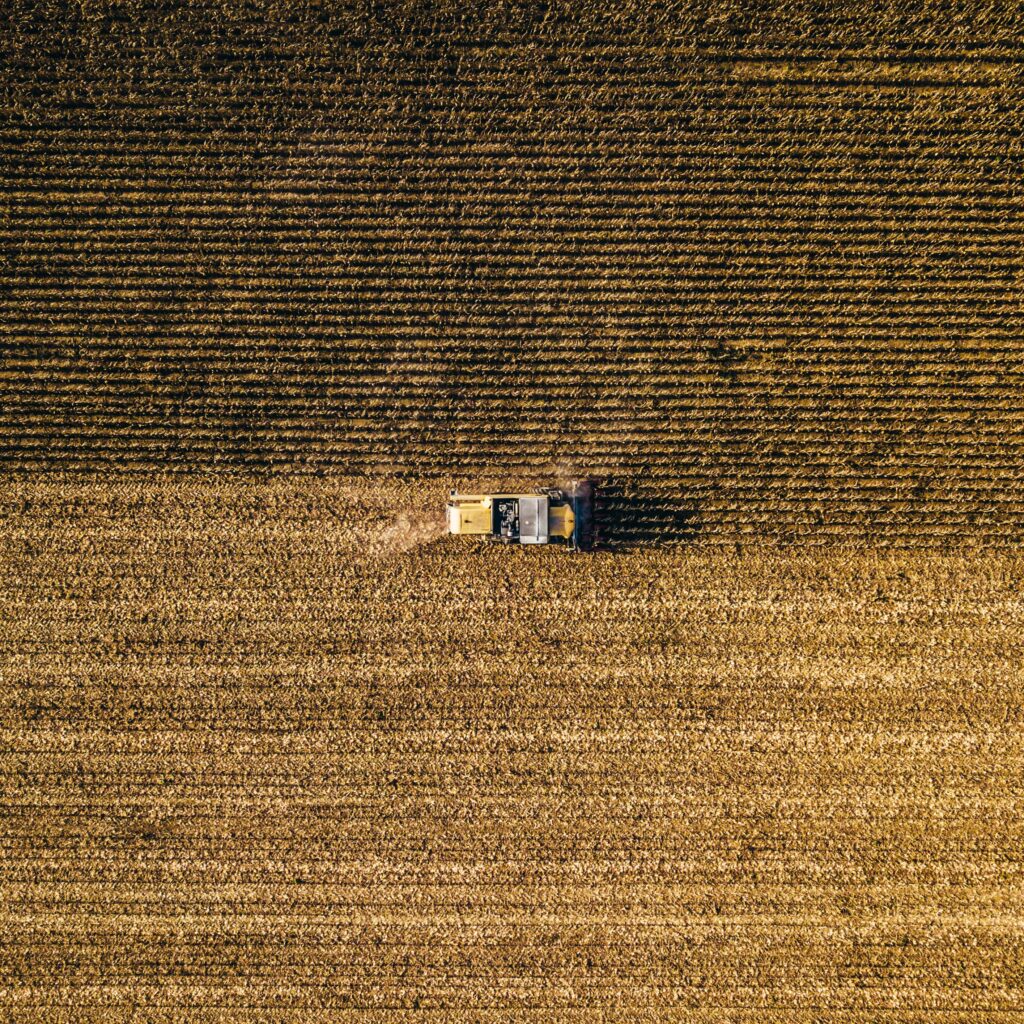
Carbon and Capitalism – False Promises for Farmers
By Seamus Masterson
It’s become quite clear over the past couple years that our country needs serious climate change legislation. Wildfires are destroying many areas of the West, natural disasters have increased in frequency, and recognition of climate change’s role in propelling oppressive conditions that affect low-income and communities of color is well known today. As a result, new market-based approaches are being hailed as perfect solutions to climate change and the inequities it breeds. Carbon Capture and Sequestration is one such tactic that is now bustling with growth and investment, currently touted as an agricultural solution to this global issue. The strategy is commonly marketed as “Regenerative Agriculture”: if farmers can transition to using more cover crops, till their soil less, and diversify their crop rotations to retain more carbon in the soil, they are then compensated for reducing global greenhouse gas emissions. Touting RA as a promising solution to our current climate catastrophe, the Carbon Institute argues that “we need to begin managing soils for the carbon cycle – putting soil carbon to work in our cities, ranches, and farms.” Many organizations, such as Farm Aid, the Soil Health Institute, and the USDA Natural Resource Conservation Service, agree that such a regenerative agricultural system would be able to restore the health of not only soil, but also communities through a healthier food supply. While there is much public support for RA, I wanted to know if it would truly equate to real environmental change and what effects it could have on our food system.
Given that the cap-and-trade market attracts investors like McDonalds, Microsoft, and Target, has seen a recent endorsement by Joe Biden and the democratic party, and continues to grow alongside technological innovation, it’s obvious why such a solution is moderately attractive. Many companies, notably nori and Indigo Agriculture are still fighting for market share and developing for-profit business models to support the growing marketplace. And they’re succeeding because of many unclear arguments that claim a high reduction rate. When the effort was initially introduced, The Carbon Underground made an unsubstantiated claim that more than 100% of current annual CO2 emissions would be taken out of the atmosphere if farmers around the world administered regenerative practices. However, it remains unknown how many farms would need to take part and whether there is a strong enough infrastructure to reach every country of the world.
However, there are often too many credits available to businesses which incentivizes continued emissions. Having the option to simply purchase more credits undermines a purposeful environmental agenda. In a study by ProPublica designed to measure the effectiveness of sequestration, researchers found that carbon emissions from California’s oil and gas industry actually rose by 3.5% after instituting a carbon cap and trade program. We also do not have the necessary scientific capabilities to accurately measure and monitor carbon changes in the soil. According to a new factsheet by the Agriculture and Trade Policy and National Family Farm Coalition, “tools to measure soil carbon accurately and reliably do not exist.” Carbon can be released as a result of severe weather events and even changes in management, so sequestration is never permanent. Thus, we should be immensely skeptical of Regenerative Agriculture’s promise. The future health of our planet is being determined by our current actions, and we’ve yet to see serious environmental legislation that will truly reduce emissions in the first place.
“Environmental Justice in a Moment of Danger” helps us see how dangerous our transition to RA really is at this time as the pandemic has already placed an environmental and health burden on low-income American communities. Julie Sze describes the relationship between carbon and capitalism as one of “dispossession, production, extraction, and disposability– in short, death and violence.” Following Sze’s framework, it becomes clear that our lack of sequestration data around regenerative agriculture will only propel environmental injustices around the world if the incentive to emit increases. Carbon markets are not and will never be the solution to environmental inequities given these statistical inadequacies. Tara Ritter, corroborated by a study by The Oregon Department of Environmental Quality, argues that as a climate solution, these markets “ignore the stance of the communities that will be most impacted by climate change and the inequities carbon markets create.” Our politicians will continue to claim that such strategies will address climate change with an emphasis on injustices, but even among farmers themselves, those with larger plots of land and more resources will most likely begin to consolidate as smaller farms will not be able to compete for carbon credits and keep up.
It’s troubling to view the future of environmental action so tightly wrapped up in an inherently inequitable system that prioritizes private business. Capitalism’s grasp on the world’s carbon is dangerous and should guide our thinking when it comes to tangible efforts to solve our current climate crisis. Our quick progression toward profit-incentivized approaches to impending environmental collapse will only hurt us more in the long run.
Author: Seamus Masterson is a student at Georgetown University majoring in Sociology and American Music Culture, COL’22 and is a Core Pathways Fellow.
Photo by Bence Balla-Schottner on Unsplash